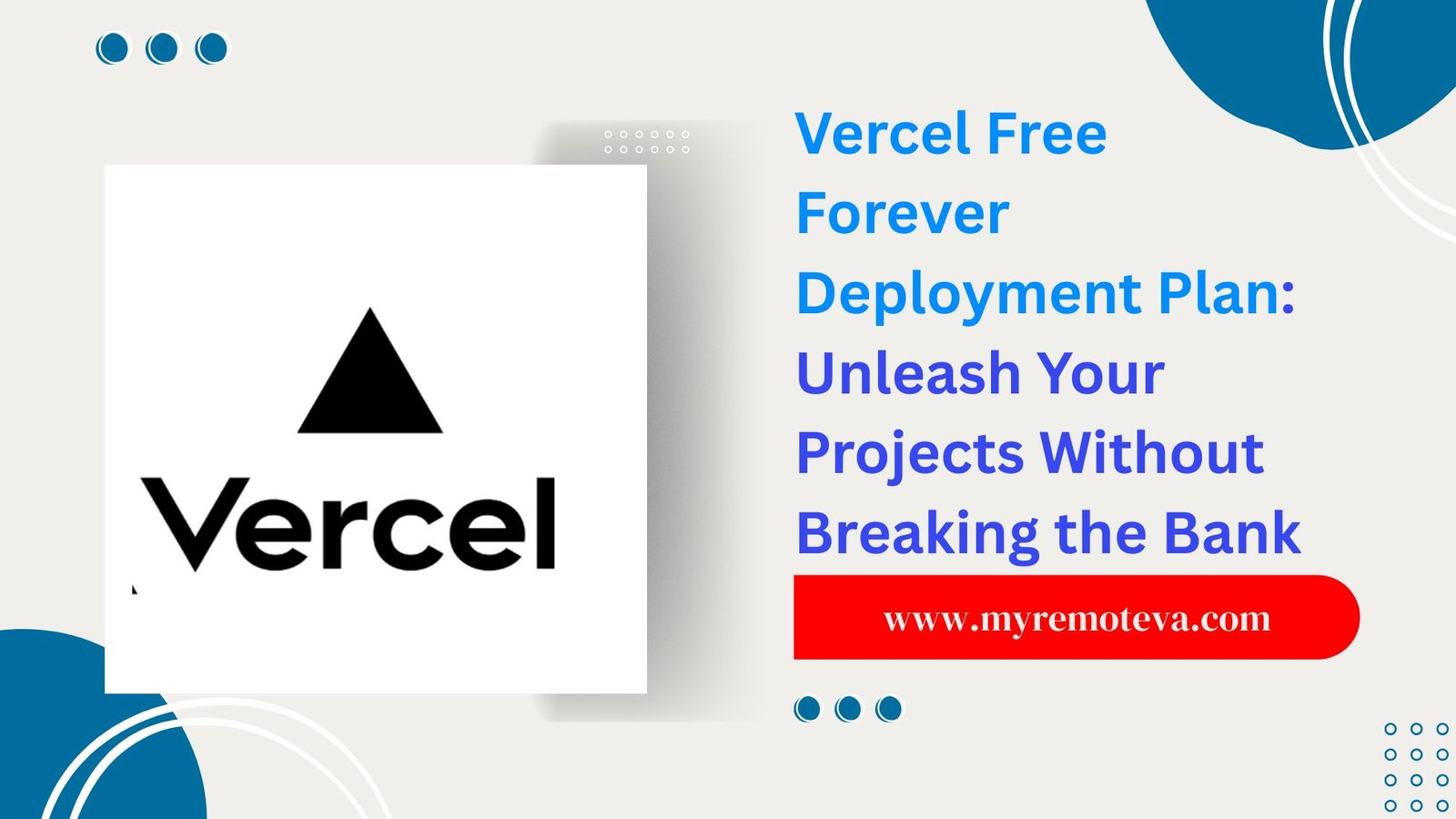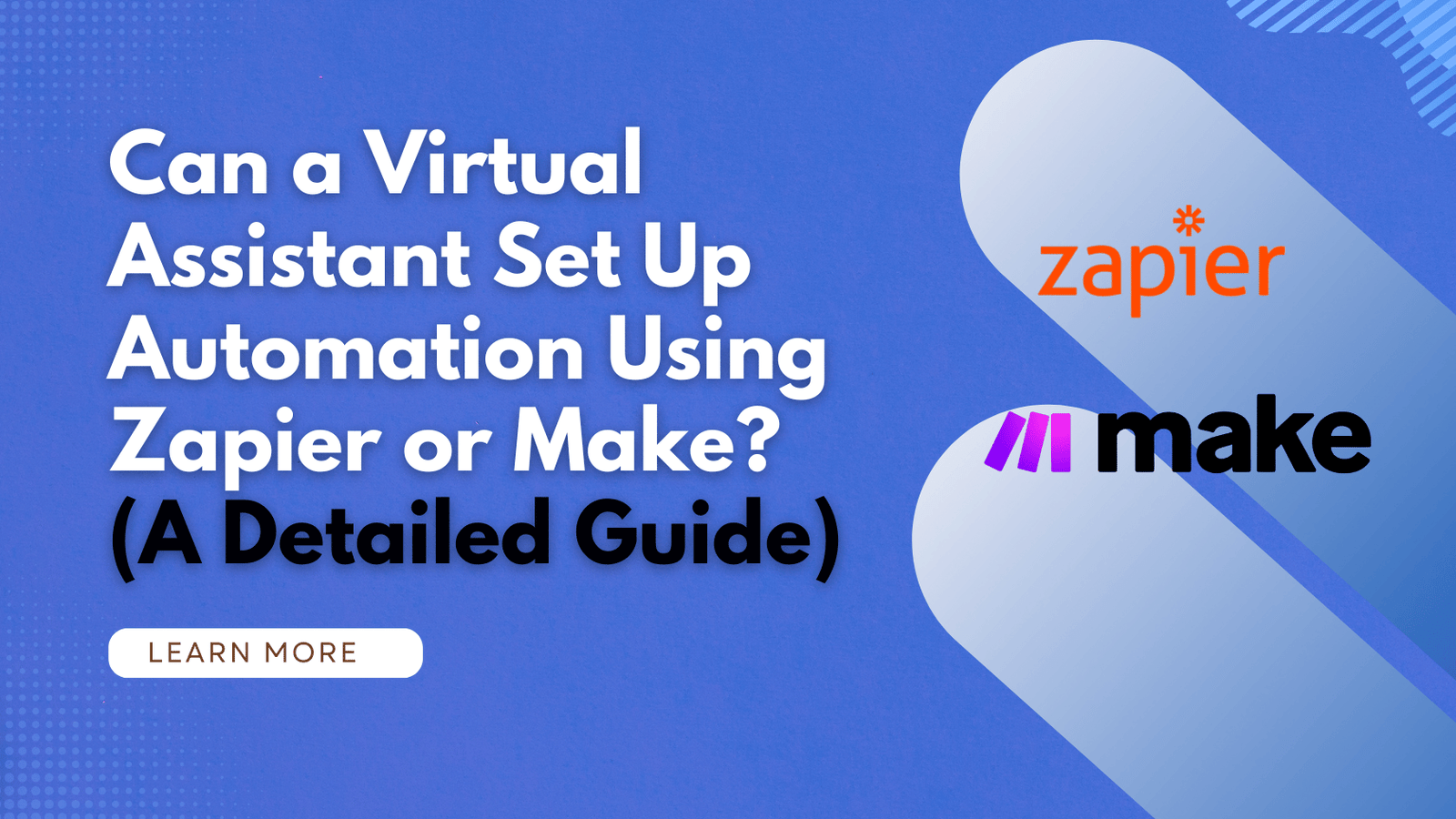Vercel Free Forever Deployment Plan: Unleash Your Projects Without Breaking the Bank
Vercel offers a compelling “Free Forever” plan that empowers developers to deploy and host web projects without immediate cost concerns. This plan is designed to provide a generous set of resources, making it ideal for personal projects, hobbyists, and even smaller production applications. Understanding the capabilities and limitations of Vercel’s free tier is crucial for maximizing its potential while staying within its boundaries.
- Vercel Free Forever Deployment Plan: Unleash Your Projects Without Breaking the Bank
- Introduction to Vercel and its Deployment Platform
- Understanding the Vercel Free Forever Deployment Plan
- Deployment with Vercel's Free Plan: A Step-by-Step Guide
- Optimizing Your Vercel Deployment for the Free Plan
- Recent Market Signals (USA, UK, New Zealand, Singapore, Australia, UAE - Last Month)
- Common Use Cases for the Vercel Free Plan
- Troubleshooting Common Vercel Deployment Issues (Free Forever Plan)
- FAQ: Frequently Asked Questions About Vercel's Free Forever Deployment Plan
- Conclusion: Is the Vercel Free Forever Deployment Plan Right for You?
What’s Included in the Vercel Free Plan?
The Vercel Free plan provides a range of features designed to get your project off the ground quickly and efficiently. Key components typically include:
- Unlimited Websites and Projects: Deploy as many websites and projects as you need. This allows for experimentation and development across numerous applications.
- Global CDN: Benefit from Vercel’s content delivery network (CDN) for fast load times and improved performance for users around the world. This ensures a responsive user experience, regardless of their location.
- Automatic SSL Certificates: Secure your websites with automatically generated SSL certificates. This eliminates the complexity of managing certificates manually and ensures secure connections for your users.
- Serverless Functions: Utilize serverless functions to run backend code without managing servers. This allows you to build dynamic features and APIs without the overhead of traditional server infrastructure. The free tier typically has usage limitations on execution time.
- Git Integration: Seamless integration with popular Git repositories like GitHub, GitLab, and Bitbucket. This simplifies the deployment process and enables continuous integration/continuous deployment (CI/CD) workflows.
Benefits of Using the Vercel Free Plan
Leveraging Vercel’s free plan offers several significant advantages:
- Cost-Effectiveness: The most obvious benefit is the lack of upfront cost, making it accessible to developers with limited budgets.
- Ease of Use: Vercel’s intuitive interface and Git integration simplify the deployment process, allowing developers to focus on building their applications.
- Scalability: While the free plan has limitations, the underlying infrastructure is built for scalability. You can easily upgrade to a paid plan as your project grows and requires more resources.
- Focus on Development: By handling infrastructure management, Vercel frees up developers to concentrate on writing code and creating compelling user experiences.
Limitations to Consider
While the Vercel Free plan is generous, it’s important to be aware of its limitations:
- Usage Limits: The free plan includes limitations on serverless function execution time, bandwidth, and storage. Exceeding these limits may result in additional charges or service restrictions.
- Team Size: Free plans typically have restrictions on the number of team members that can collaborate on projects.
- Support Level: Access to support may be limited compared to paid plans.
In summary, the Vercel “Free Forever” deployment plan provides a powerful and accessible platform for developers to launch their web projects. By understanding the features, benefits, and limitations, developers can effectively utilize this plan to bring their ideas to life without incurring significant costs.
Introduction to Vercel and its Deployment Platform
Vercel has become a leading platform for deploying web applications, particularly those built with modern JavaScript frameworks like React, Next.js, and Vue.js. Known for its speed, simplicity, and focus on developer experience, Vercel offers a compelling solution for developers looking to streamline their deployment workflows. One of the platform’s attractive features is the availability of a “Vercel Free Forever Deployment Plan,” which makes it accessible to a wide range of users, from hobbyists to startups.
Understanding the Vercel Free Forever Deployment Plan
The “Vercel Free Forever Deployment Plan” provides a generous set of resources and features that allow users to deploy and host websites and applications without incurring any cost. This plan is designed to support personal projects, small websites, and proof-of-concept applications. However, it’s essential to understand the specific limitations and usage restrictions that apply to this free tier.
Generally, free plans like Vercel’s come with limitations such as:
- Usage Limits: Restrictions on bandwidth, storage, and serverless function execution time.
- Team Size Limitations: Restrictions on the number of team members that can collaborate on a project.
- Feature Restrictions: Limited access to advanced features such as custom domains, SSL certificates, or priority support.
While specific details may change over time, Vercel’s free plan typically allows developers to deploy static sites and serverless functions within certain usage thresholds. It’s a great way to experiment with Vercel’s capabilities and deploy simpler projects without committing to a paid plan.
Who Benefits from the Vercel Free Forever Plan?
The Vercel Free Forever Deployment Plan is particularly beneficial for:
- Individual Developers: Perfect for personal projects, portfolio sites, and learning new technologies.
- Small Teams & Startups: Ideal for deploying minimum viable products (MVPs) and proof-of-concept applications to test market viability.
- Students: Provides a cost-effective platform for students to host their projects and gain practical experience.
It is essential for any user to review the current Vercel pricing and feature comparison to ensure the “Free Forever” plan meets their specific needs and understand any limitations before committing to it for critical production environments.
Understanding the Vercel Free Forever Deployment Plan
Vercel offers a “Hobby” plan, often referred to as the “Vercel Free Forever Deployment Plan,” which provides developers with a powerful platform for deploying web applications and static sites without incurring costs. This plan is designed to support individual developers, hobbyists, and small teams who are just starting out or prototyping new projects.
The Vercel free plan provides substantial resources, enabling you to deploy and host websites and applications built using popular frameworks like Next.js, React, Vue.js, and more. It’s an excellent option for personal portfolios, landing pages, blogs, and side projects.
Key Features & Limitations of the Free Plan
While generous, the Vercel Free Forever Deployment Plan does have some limitations that are important to consider:
- Serverless Functions Execution: The free plan includes a limited number of serverless function execution hours per month. Exceeding this limit could lead to overage charges or suspension of your services. Carefully monitor your function usage, especially if your application relies heavily on serverless logic.
- Build Time: Similar to serverless function execution, build time is also capped on the free plan. Larger or more complex projects that require extensive build processes might need to optimize their builds or consider a paid plan.
- Team Size: The free plan is typically intended for individual use or very small teams. While you *can* collaborate, larger teams may find the limitations restrictive and may benefit from a paid plan that offers greater collaboration features and resources.
- CDN Bandwidth: Content delivery network (CDN) bandwidth is provided but is subject to limitations. High-traffic websites might experience slower loading times or need to upgrade to a paid plan for increased bandwidth.
- Edge Functions: Some advanced features, such as edge functions may have limitations or restrictions under the free plan. Carefully review the Vercel documentation to understand the specific constraints.
It’s essential to meticulously review Vercel’s official documentation and terms of service for the most accurate and up-to-date information regarding the Free Forever Deployment Plan’s features, limitations, and acceptable usage policies. This will help avoid unexpected charges or service interruptions.
Is the Vercel Free Plan Right for You?
The Vercel free plan shines for:
- Small Projects & Prototypes: It’s perfect for learning new technologies, building personal projects, and creating quick prototypes.
- Static Sites & Simple Web Apps: If your website is primarily static content or has minimal server-side logic, the free plan may be sufficient.
- Learning & Experimentation: The free tier offers a risk-free environment to explore the Vercel platform and its features.
However, consider a paid plan if:
- High Traffic: Your website experiences significant traffic volumes.
- Complex Applications: Your application relies heavily on serverless functions, databases, or other resource-intensive services.
- Team Collaboration: You require advanced collaboration features and roles for a larger development team.
- Guaranteed Uptime & Support: You need Service Level Agreements (SLAs) and priority support.
Ultimately, the decision depends on your specific needs and project requirements. The “Vercel Free Forever Deployment Plan” offers a valuable starting point, but it’s crucial to understand its limitations and plan accordingly as your project evolves. If you need assistance with any aspect of website deployment or server management consider options like delegating work to expert virtual assistants. They can handle tasks from managing serverless functions to monitoring CDN bandwidth usage.
Deployment with Vercel’s Free Plan: A Step-by-Step Guide
Vercel offers a generous free forever deployment plan, perfect for hobby projects, personal websites, and even initial stages of startup development. This plan allows you to deploy static sites and serverless functions with ease, making it an excellent choice for many developers. Here’s a step-by-step guide to get you started.
Step 1: Prepare Your Project
Before deploying, ensure your project is ready. This includes:
- Code Quality: Ensure your code is clean, well-documented, and free of errors.
- Version Control: Ideally, your project should be hosted on a Git repository (e.g., GitHub, GitLab, or Bitbucket). Vercel seamlessly integrates with these platforms.
- Dependencies: Make sure all dependencies are properly managed and declared in your project’s package manager file (e.g.,
package.jsonfor Node.js projects).
Step 2: Create a Vercel Account
If you don’t already have one, head over to the Vercel website and create a free account. You can sign up using your GitHub, GitLab, or Bitbucket account, or with your email address. Using a Git provider offers the easiest integration experience.
Step 3: Import Your Project
Once logged in, you can import your project from your Git repository. Vercel will automatically detect the framework you’re using (e.g., Next.js, React, Vue.js) and suggest the appropriate build settings. This auto-detection significantly simplifies the deployment process.
Step 4: Configure Deployment Settings (If Necessary)
In most cases, Vercel will automatically configure the deployment settings based on your project. However, you may need to adjust certain settings, such as:
- Build Command: The command to build your project (e.g.,
npm run buildoryarn build). - Output Directory: The directory containing the built files that Vercel should serve (e.g.,
outorpublic). - Environment Variables: Any environment variables your application needs (e.g., API keys, database connection strings).
Step 5: Deploy!
Once your project is configured, click the “Deploy” button. Vercel will build your project and deploy it to a unique URL. This URL will be publicly accessible. During the deployment process, Vercel provides real-time logs and status updates.
Step 6: Connect a Custom Domain (Optional)
The free plan allows you to connect a custom domain to your deployed project. This requires updating your domain’s DNS records to point to Vercel’s servers. The Vercel dashboard provides detailed instructions on how to configure your DNS settings.
Understanding Vercel’s Free Forever Plan Limitations
While the free plan is excellent for many use cases, it’s important to understand its limitations. These may include:
- Serverless Function Execution: Limitations on execution duration and memory allocation for serverless functions.
- Edge Network: Access to Vercel’s global edge network might be limited compared to paid plans.
- Analytics: Detailed analytics might be restricted in the free plan.
- Team Size: Limited team members on the plan.
For projects that require more resources or features, Vercel offers paid plans with increased limits and additional capabilities. However, for getting started and deploying simple projects, the free forever deployment plan is an unbeatable option.
Optimizing Your Vercel Deployment for the Free Plan
Vercel’s “Hobby” plan, often referred to as the “free forever” plan, provides an excellent starting point for developers and small projects. However, it comes with certain limitations. Understanding and optimizing your deployment strategy is crucial to staying within the free tier’s constraints and ensuring a smooth, cost-effective experience.
The key limitations to be aware of in the free plan typically revolve around build duration, serverless function execution limits, and bandwidth usage. Exceeding these limits could lead to your project being paused or requiring an upgrade to a paid plan.
Understanding Vercel’s Resource Consumption
Before diving into optimization techniques, it’s vital to monitor how your project utilizes Vercel’s resources. This includes:
* **Build Duration:** The time it takes to build your project on Vercel’s servers. Complex projects with extensive dependencies can consume more build time.* **Serverless Function Execution:** The duration and frequency with which your serverless functions are executed. Each invocation contributes to the overall usage.* **Bandwidth:** The amount of data transferred between your application and users. Image-heavy websites or applications with large data transfers consume more bandwidth.
Strategies for Minimizing Resource Usage
Here are some practical strategies to optimize your Vercel deployment and stay within the free plan limits:
* **Optimize Images:** Large images are a major source of bandwidth consumption. Compress images using tools like ImageOptim or TinyPNG before uploading them. Consider using modern image formats like WebP, which offer better compression than JPEG or PNG. Use responsive images to serve appropriately sized images based on the user’s device.* **Code Splitting:** Divide your code into smaller chunks using techniques like dynamic imports. This reduces the initial load time and the amount of code that needs to be executed on the server. This can indirectly impact serverless function execution time.* **Efficient Serverless Functions:** Serverless functions should be optimized for speed and efficiency. Avoid unnecessary computations and database queries. Cache frequently accessed data to reduce the load on your database and improve response times.* **Static Site Generation (SSG):** For content that doesn’t change frequently, use static site generation. This pre-renders your content at build time, reducing the need for serverless function executions and improving performance. Frameworks like Next.js and Gatsby excel at SSG.* **Incremental Static Regeneration (ISR):** A hybrid approach that combines SSG with the ability to update content periodically. This provides the benefits of SSG while allowing for dynamic content updates without requiring a full rebuild.* **Caching Strategies:** Implement effective caching strategies to minimize the number of requests to your server. Utilize Vercel’s built-in CDN (Content Delivery Network) to cache static assets closer to your users, reducing latency and bandwidth usage. Set appropriate cache headers to control how long assets are cached in browsers and CDNs.
Monitoring and Iteration
Regularly monitor your Vercel usage dashboard to track your build duration, serverless function executions, and bandwidth consumption. This data will help you identify areas for further optimization. Be prepared to iterate on your optimization strategies as your project evolves.
Recent Market Signals (USA, UK, New Zealand, Singapore, Australia, UAE – Last Month)
Interest in “Vercel free forever deployment plan” remains consistently strong across several key markets, indicating its continued appeal to developers seeking cost-effective hosting solutions. Google Trends data from the past month reveals sustained search volumes in the USA, UK, Australia, and Singapore, suggesting ongoing adoption and interest from both hobbyists and professional developers looking to deploy smaller projects or test environments without upfront costs.
Anecdotal evidence, based on forum discussions and social media mentions, reveals that developers in these regions appreciate Vercel’s free plan for its ease of use and the platform’s focus on performance. The ability to deploy static sites and serverless functions quickly and easily, coupled with Vercel’s global CDN, makes it an attractive option. Some discussions also highlight the limitations of the free tier, particularly concerning usage limits and feature availability, prompting users to consider paid plans as their projects grow .
New Zealand and the UAE show slightly lower, but still noticeable, search interest. This could reflect a smaller overall developer population in these regions, or potentially a preference for alternative hosting solutions depending on specific project requirements . Further research would be needed to determine the specific factors influencing adoption in these markets.
The continued interest in Vercel’s free forever deployment plan across these geographically diverse markets highlights the value proposition of accessible, performant web deployment. For startups and busy professionals, the ability to leverage such platforms can allow them to focus on development rather than infrastructure management, thus saving valuable time and resources.
For those looking for further assistance beyond platform usage, expert virtual assistant support can be valuable. This support can extend to task management, basic website maintenance, customer support, or even marketing activities. Having such assistance frees up valuable time.
Common Use Cases for the Vercel Free Plan
The Vercel Free plan, often referred to as the “Vercel Free Forever” plan, is incredibly versatile and suitable for a wide array of projects. Its generous limitations allow developers to experiment, learn, and even deploy smaller production applications without incurring any costs.
Personal Portfolio Websites
One of the most popular use cases is for personal portfolio websites. Developers can showcase their skills and projects using frameworks like Next.js, which are perfectly suited for Vercel’s infrastructure. The free plan provides enough bandwidth and serverless functions to handle the traffic of a typical personal website.
Static Websites and Landing Pages
Static websites, like informational landing pages or simple blogs built with tools like Hugo or Jekyll, thrive on the Vercel Free plan. Vercel’s CDN ensures fast loading times for users around the globe, providing a superior user experience without breaking the bank. The ease of deployment and automatic scaling are especially beneficial for these types of projects.
Proof-of-Concept (POC) Projects
The free plan is an excellent choice for prototyping and building Proof-of-Concept (POC) projects. Developers can quickly deploy and test their ideas without worrying about infrastructure costs. This allows for rapid iteration and experimentation, accelerating the development process. If the POC gains traction, upgrading to a paid plan is a seamless process.
Open-Source Projects
Vercel’s generous offering is a boon for open-source developers. They can deploy their projects and provide a live demo for potential users and contributors. This increases the visibility and accessibility of the project, encouraging community involvement. Automatic deployments triggered by Git pushes further simplify the maintenance process.
Learning and Experimentation
New developers can leverage the Vercel Free plan to learn and experiment with modern web development technologies. Deploying projects directly from a Git repository provides hands-on experience with CI/CD pipelines and serverless functions, crucial skills in today’s development landscape.
Troubleshooting Common Vercel Deployment Issues (Free Forever Plan)
Even with Vercel’s streamlined deployment process, especially when utilizing the Free Forever deployment plan, issues can occasionally arise. Understanding common problems and their solutions can save you significant time and frustration. This section provides expert guidance to help you diagnose and resolve typical deployment obstacles.
Common Deployment Errors on the Free Forever Plan
The Vercel Free Forever plan offers a generous environment for personal projects and experimentation, but it also comes with certain limitations. Many deployment issues stem from exceeding these resource constraints.
Build Time Exceeded
Vercel Free Forever plans have a limited build time. If your project is large or has complex dependencies, the build process might time out. Optimize your build process by:
- Code Splitting: Break down your application into smaller, more manageable chunks.
- Caching Dependencies: Utilize Vercel’s caching mechanisms to avoid re-downloading dependencies on every build.
- Optimizing Images: Ensure your images are properly compressed and optimized for web delivery. Large images can significantly increase build times.
Function Size Limits
Serverless functions, commonly used for dynamic content and APIs, have size limits on the Free Forever plan. If your function exceeds this limit, deployment will fail. Solutions include:
- Reducing Dependencies: Remove unnecessary packages from your function’s dependencies.
- Optimizing Code: Refactor your code to be more efficient and reduce its overall size.
- Splitting Large Functions: Break down large functions into smaller, more manageable units.
Memory Limit Exceeded
Similar to function size, serverless functions are also limited in memory. If your function requires more memory than allocated, you’ll encounter an error. You can address this by:
- Optimizing Algorithms: Improve the efficiency of your algorithms to reduce memory consumption.
- Streaming Data: Process large datasets in smaller chunks using streaming techniques.
- Externalizing Data Storage: Consider storing large datasets in external databases or storage services.
Deployment Failed Due to Code Errors
This is a broad category encompassing syntax errors, runtime exceptions, and other code-related problems. Vercel’s logs are crucial for diagnosing these issues:
- Reviewing Logs: Carefully examine the Vercel deployment logs for error messages and stack traces.
- Local Testing: Thoroughly test your code locally before deploying to Vercel. Use the same environment variables and configurations as your production environment.
- Debugging: Utilize debugging tools to identify and fix code errors.
General Vercel Deployment Troubleshooting Tips
Regardless of the specific error, consider these general troubleshooting steps:
- Check Vercel Status: Before diving deep into your code, check Vercel’s status page to ensure there are no ongoing platform issues .
- Clear Cache and Redeploy: Sometimes, a simple cache clear and redeploy can resolve transient issues.
- Update Vercel CLI: Ensure you are using the latest version of the Vercel CLI.
- Consult Documentation: Refer to Vercel’s comprehensive documentation for detailed information and troubleshooting guides.
By understanding these common issues and applying the suggested solutions, you can effectively troubleshoot Vercel deployments and maximize the benefits of the Free Forever plan.
FAQ: Frequently Asked Questions About Vercel’s Free Forever Deployment Plan
Understanding the nuances of Vercel’s “Free Forever” deployment plan can help you leverage its capabilities effectively. Here are some frequently asked questions to clarify its scope and limitations.
What exactly is included in Vercel’s “Free Forever” plan?
Vercel’s Free plan offers a generous set of features designed for personal projects, hobbyists, and small-scale deployments. It typically includes:
- Unlimited Deployments: Deploy your projects as many times as needed.
- Global CDN: Benefit from Vercel’s Content Delivery Network (CDN) for fast and reliable content delivery worldwide. This helps ensure your application loads quickly for users regardless of their location.
- Automatic HTTPS: Enjoy automatic SSL certificates for secure connections.
- Serverless Functions: Utilize serverless functions for backend logic. These functions are triggered by events and automatically scale, handling varying levels of traffic.
- Hobby Projects: Well-suited for personal and non-commercial projects.
These features make it an attractive option for developers experimenting with new technologies or hosting personal portfolios.
Are there any limitations to the Vercel Free plan?
Yes, the Free plan has certain limitations to be aware of:
- Team Size: Usually limited to a single user. Collaboration features are typically reserved for paid plans.
- Resource Usage: Restrictions on build times, serverless function execution time, and bandwidth usage may apply. Exceeding these limits might result in performance degradation or require upgrading to a paid plan. Specific limits may vary so it’s important to check the current Vercel documentation.
- Commercial Use: While suitable for personal projects, it may not be appropriate for high-traffic commercial applications or enterprise-level deployments.
- Support: Free plans usually come with limited support options compared to paid plans.
When should I consider upgrading from the Free plan?
Consider upgrading when your project outgrows the limitations of the Free plan. This usually happens when:
- You need to collaborate with a team: Paid plans unlock team collaboration features.
- Your project generates significant traffic: Increased bandwidth and resource allocation are needed to handle higher loads.
- You require more serverless function execution time: Complex applications with extensive backend logic may require more processing power.
- You need advanced features: Access to priority support, custom domains, or advanced security features.
- Your project becomes commercially viable: For revenue-generating projects, a paid plan ensures you have the resources and support necessary for reliable operation.
Does “Free Forever” actually mean forever?
While Vercel advertises the plan as “Free Forever,” it’s important to understand this in the context of their business model. Vercel reserves the right to modify its plans and pricing. However, the intent is to provide a valuable free tier that remains accessible to individual developers and hobbyists. It is always recommended to review Vercel’s terms of service for the most up-to-date information.
Conclusion: Is the Vercel Free Forever Deployment Plan Right for You?
Deciding if the Vercel Free Forever plan is suitable for your needs requires careful consideration of your project’s scale, complexity, and long-term goals. While the plan offers a compelling entry point into serverless deployment and hosting, it’s essential to understand its limitations.
Assessing Your Project’s Needs
The Vercel Free Forever plan excels for personal projects, hobby sites, proof-of-concept applications, and smaller static websites. It provides a generous amount of resources for learning and experimenting with modern web development workflows. However, if your project is anticipated to experience significant traffic, requires extensive serverless function execution, or demands advanced features like comprehensive analytics or dedicated support, you may quickly outgrow the free tier.
Understanding the Limitations
The primary limitations of the Free Forever plan revolve around usage limits. Exceeding these limits, such as build minutes, function execution time, or bandwidth, will necessitate upgrading to a paid plan. Furthermore, access to certain advanced features like advanced security configurations, dedicated support channels, and higher availability SLAs is typically reserved for paid plans.
Serverless functions, a key feature of Vercel, allow you to run backend code without managing servers. The Free Forever plan offers a limited amount of execution time for these functions. Consider the complexity of your application’s backend logic and the frequency with which these functions will be invoked. Complex applications with frequent API calls may benefit from the increased resources of a paid plan.
Data-Backed Insights and Considerations
Many developers find the Free Forever plan to be an excellent starting point, allowing them to validate their ideas and build initial prototypes. Data shows a significant number of users eventually transition to paid plans as their projects grow and their needs become more demanding . This demonstrates the plan’s value as a stepping stone for larger deployments.
Ultimately, the decision hinges on a thorough assessment of your project’s requirements. Ask yourself: What is the expected traffic volume? How complex is the application’s logic? What level of support and features are essential for long-term success? Answering these questions will guide you in determining whether the Vercel Free Forever plan is a suitable long-term solution or if a paid plan offers a better fit for your needs.














